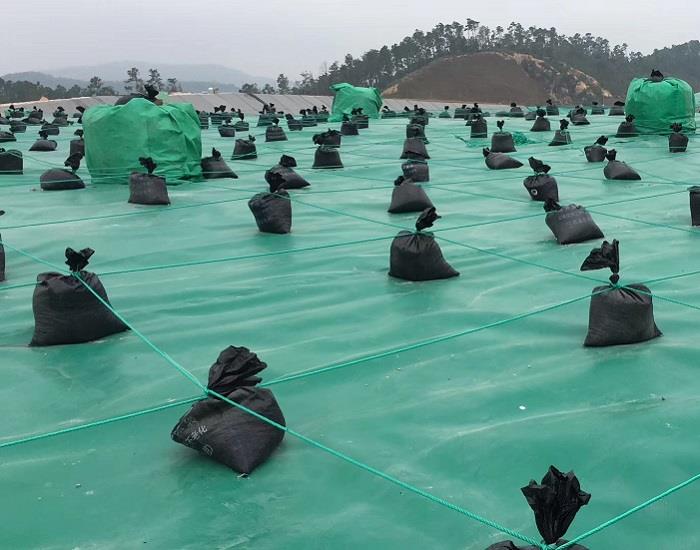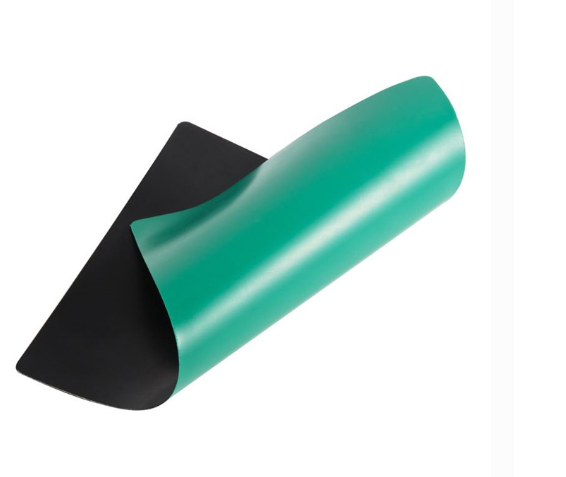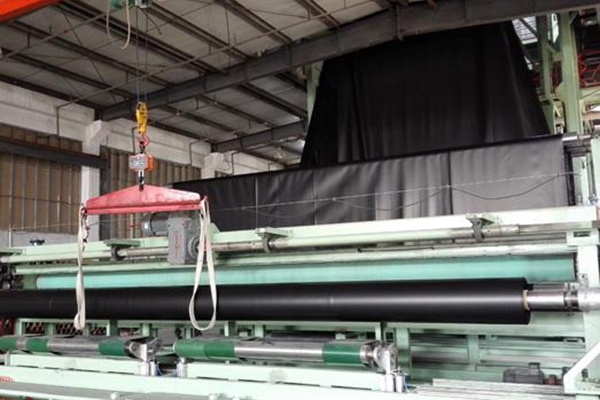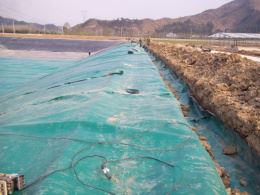Geomembranes are essential components in a variety of engineering and environmental applications, particularly in waste management, water control, and landfills. Among the different types of geomembranes available, high-density polyethylene (HDPE) geomembranes are widely recognized for their durability and effectiveness. This article will explore the specific characteristics of HDPE geomembranes, with a particular focus on 1.5 mm thickness, its life expectancy, and its applications.

What is HDPE Geomembrane?
HDPE geomembranes are synthetic membranes made from high-density polyethylene. They are designed to be used as a barrier to prevent the migration of fluids or gases in a variety of applications. The material is known for its excellent chemical resistance, low permeability and high tensile strength, making it an ideal choice for projects that require a reliable containment solution.
How thick is the HDPE geomembrane liner?
The thickness of HDPE geomembranes will vary depending on the specific application and project requirements. A common thickness is 1.5 mm, which is often used in a variety of protective applications. The thickness of the geomembrane liner is critical as it directly affects its performance, durability, and resistance to punctures and tears.
Generally, HDPE geomembranes are available in a variety of thicknesses, usually ranging from 0.5 mm to 3.0 mm or more. The choice of thickness depends on several factors, including:
1.Application Type: Different applications may require different thicknesses. For example, a landfill liner may require a thicker geomembrane than a pond liner because the landfill liner may be subjected to greater pressure and exposed to harsh chemicals.
2.Environmental Conditions: The environmental conditions in which the geomembrane is installed will also affect the required thickness. Areas with extreme temperatures, high UV exposure, or potential for mechanical damage may require a thicker liner.
3.Regulatory requirements: Some projects may be subject to specific regulations that dictate the minimum thickness of geomembranes used in certain applications.


What is the life expectancy of a geomembrane?
The life expectancy of an HDPE geomembrane can vary widely depending on a number of factors, including material thickness, environmental conditions, and specific application. Typically, HDPE geomembranes are designed to last for several decades, with many manufacturers offering warranties of 20 to 30 years.
Factors that affect the life of geomembranes include:
1.Material Quality: The quality of the HDPE used in geomembranes plays a critical role in their service life. High-quality materials that meet industry standards are more likely to withstand long-term environmental stress.
2.Installation Specifications: Proper installation is critical to the performance and service life of the geomembrane. Improper installation can lead to problems such as wrinkling, perforation or inadequate sealing, compromising the integrity of the liner.
3.Environmental Exposure: HDPE geomembranes are resistant to UV radiation, but prolonged exposure will still cause them to gradually degrade. In addition, exposure to extreme temperatures, chemicals, and physical stress can affect the life of the geomembrane.
4.Maintenance: Regular inspection and maintenance can help extend the life of your geomembrane. Promptly addressing any issues can prevent minor problems from escalating into major failures.
Application of HDPE Geomembrane
HDPE geomembranes, especially those with a thickness of 1.5 mm, are used for a variety of purposes, including:
1.Landfill: HDPE geomembrane is often used as a liner in landfills to prevent leachate from contaminating the surrounding soil and groundwater.
2.Ponds and Reservoirs: These geomembranes are effective in lining ponds and reservoirs to prevent water loss and pollution.
3.Mining Operations: In mining, HDPE geomembranes are used to contain tailings and prevent harmful materials from leaching into the environment.
4.Agricultural Applications: HDPE geomembranes can be used in irrigation ponds, aquaculture and other water management systems in agricultural environments.
5.Wastewater Treatment: They are also used in wastewater treatment facilities to control and manage wastewater.


in conclusion
HDPE geomembranes, especially those with a thickness of 1.5 mm, are a reliable choice for a variety of protective applications. Their durability, chemical resistance, and long life make them an essential component in environmental protection and engineering projects. Understanding the factors that affect the thickness and life of these geomembranes can help engineers and project managers make informed decisions to ensure the success and sustainability of their projects. As technology advances, the performance and applications of HDPE geomembranes will continue to evolve, further enhancing their role in environmental management and protection.
Post time: Nov-29-2024